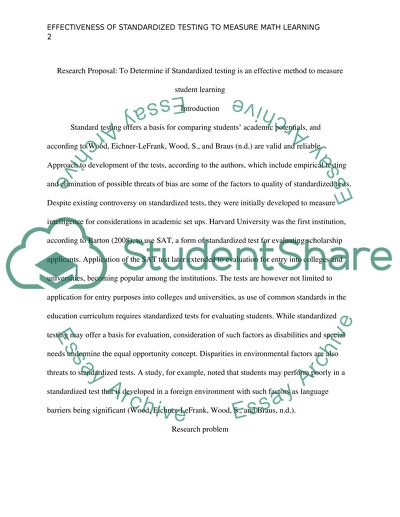Cite this document
(“Proposal to determine if standardized testing is an effective method Research”, n.d.)
Proposal to determine if standardized testing is an effective method Research. Retrieved from https://studentshare.org/education/1688371-proposal-to-determine-if-standardized-testing-is-an-effective-method-to-measure-student-learning
Proposal to determine if standardized testing is an effective method Research. Retrieved from https://studentshare.org/education/1688371-proposal-to-determine-if-standardized-testing-is-an-effective-method-to-measure-student-learning
(Proposal to Determine If Standardized Testing Is an Effective Method Research)
Proposal to Determine If Standardized Testing Is an Effective Method Research. https://studentshare.org/education/1688371-proposal-to-determine-if-standardized-testing-is-an-effective-method-to-measure-student-learning.
Proposal to Determine If Standardized Testing Is an Effective Method Research. https://studentshare.org/education/1688371-proposal-to-determine-if-standardized-testing-is-an-effective-method-to-measure-student-learning.
“Proposal to Determine If Standardized Testing Is an Effective Method Research”, n.d. https://studentshare.org/education/1688371-proposal-to-determine-if-standardized-testing-is-an-effective-method-to-measure-student-learning.


